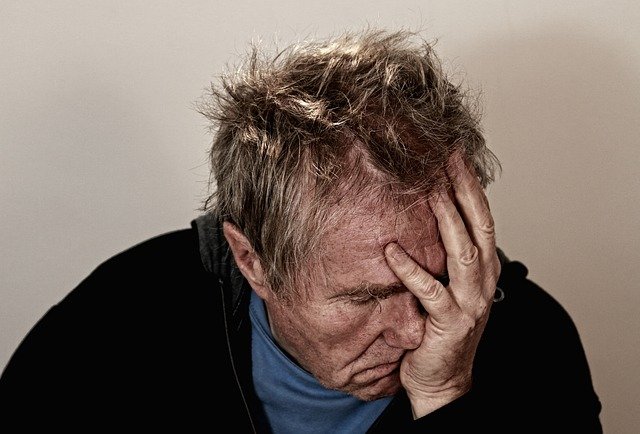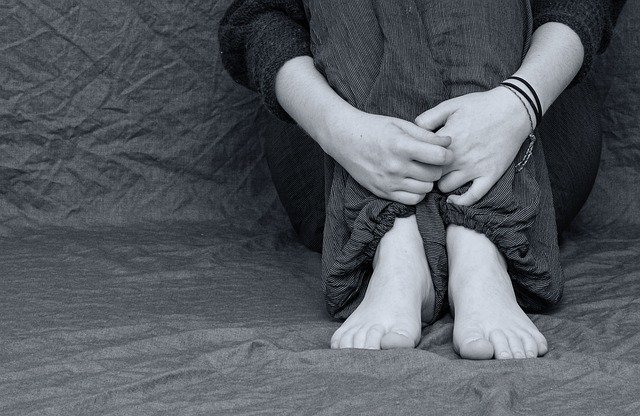
Narcan is a brand name for naloxone. It’s a medicine that can rapidly reverse the life-threatening effects of an opioid overdose. Narcan is an opioid antagonist. This means it attaches to opioid receptors in the brain and reverses and blocks the effects of other opioids. It can quickly restore normal breathing to someone whose breathing has stopped or slowed due to an opioid overdose.
However, naloxone doesn’t have any effect on someone who doesn’t have opioids in their system. It is also not a treatment for opioid use disorder (OUD). Some examples of opioids are:
- Heroin
- Fentanyl
- Oxycodone (OxyContin)
- Hydrocodone (Vicodin)
- Codeine
- Morphine
Who Can Administer Narcan Nasal Spray?
Narcan was developed for a home setting:
- First responders
- Family members
- Friends
- Caregivers with no medical training necessary
Narcan is a prescription medicine that is needle-free, designed to be easy to use in the community setting, does not need to be inhaled, and requires no special training to use. It was developed for a home setting because many overdoses occur in that kind of environment.
When Should Narcan Be Used?
Narcan should be used immediately if anyone exhibits signs or symptoms of an opioid overdose. People should administer it even if they aren’t sure as an opioid overdose can cause severe injury or death.
Signs and symptoms of an opioid overdose include:
- Unusual sleepiness–you aren’t able to awaken the person with a loud voice or rubbing firmly in the middle of their chest
- Breathing problems–this includes shallow or slow breathing in someone who is hard to wake up or it looks like they’re not breathing
- The black circle in the center of the colored part of the eye (pupil) is very small (also known as “pinpoint pupils”)
- Slow or irregular pulse or without a pulse
- Making deep, slow snoring, choking, or gurgling sounds
- Vomiting
Narcan is meant to be used right away but it doesn’t take the place of emergency medical assistance. Get help as soon as possible after giving the first dose of Narcan, even if the person wakes up.
The signs and symptoms of an opioid overdose can reoccur after Narcan has been used. If this happens, give another dose after 2 to 3 minutes using a new device and watch the person closely until emergency help arrives.
Possible Narcan Side Effects
Narcan can cause opioid withdrawal symptoms. Withdrawal symptoms can be severe for some individuals. For people who have been using opioids regularly, opioid withdrawal symptoms can happen suddenly after receiving Narcan and may include:
- Body aches
- Diarrhea
- Rapid heart rate
- Fever
- Runny nose
- Sneezing
- Goosebumps
- Sweating
- Yawning
- Nervousness
- Nausea or vomiting
- Increased blood pressure
- Stomach cramping
Some individuals may show aggressive behavior after the sudden reversal of an opioid overdose.
Who Should Not Use It?
You should not use Narcan if:
- You have heart problems.
- You are pregnant or plan to become pregnant. The use of Narcan can cause withdrawal symptoms in your unborn baby. If you do use it, the unborn baby should be examined immediately by a healthcare professional.
- You are breastfeeding or plan to. Narcan may pass into breastmilk.

How To Administer Narcan in Different Forms
First of all, members, caregivers, or any other people who might need to use Narcan in case of an opioid overdose should always know how to administer Narcan and where it’s kept. It should be given to anyone who shows signs of an opioid overdose.
Naloxone can be given:
- As a nasal spray
- Injected into the muscle
- Under the skin
- Into the veins
Using a syringe to inject naloxone is mainly done by medical personnel. The nasal spray systems were developed to be easy to use by non-medical people such as in a home or the community.
How To Administer Narcan Injections
Injectable brands of naloxone are produced by different companies. The correct dose must be drawn up from a vial and injected with a needle into a muscle, a vein, or under the skin.
How to Administer Narcan Nasal Spray
The prepackaged nasal spray was developed using NIDA (National Institute for Drug Abuse) funded research. It’s a needle-free device that doesn’t need assembly and is sprayed into one nostril while the person lays on their back. This method can be easier for bystanders and loved ones without formal training to administer.
People with loved ones who have opioid addiction should keep naloxone nearby. Ask their addicted individual to carry it and let friends know where it is. Still, call 911 immediately if there is an overdose.
Steps on How To Administer Narcan Nasal Spray
Before administering Narcan nasal spray, you should lie the person on their back. Tilt the head back and support their neck with one of your hands. After removing the spray from the package:
- Hold the spray in one hand with your thumb on the bottom of the plunger and your first and the middle fingers on either side of the nozzle.
- Gently insert the tip of the nozzle into one of the person’s nostrils.
- Push on the plunger firmly to give the person the full dose of the Narcan. Then remove the spray device from their nostril.
- Call 911 immediately after giving the first dose.
- After calling 911, turn the person onto their side and place them into the “recovery position.” In the recovery position, they will have one of their hands under their head and one knee bent forward to prevent them from rolling onto their stomach. This will keep them from choking in case they vomit.
What To Watch For
Overdose Symptoms May Come Back
Narcan reverses opioid overdose in the body for only 30-90 minutes. However, many opioids stay in the body for longer than that. This means that it is still possible for a person to experience the effects of an overdose after the Narcan wears off.
Multiple Doses May Be Necessary
In addition, some opioids are stronger and might need multiple doses of naloxone. Because of this, one of the most important steps to take is to call 911 to receive medical attention. The individual who has been given naloxone should be monitored for another 2 hours after the last dose of naloxone to make sure the breathing does not slow down or stop.
If the person hasn’t started breathing normally within 2 to 3 minutes give another dose. If it’s necessary to administer a second dose, put it in the opposite nostril from the first dose. Keep monitoring their breathing and give additional doses every 2 to 3 minutes if needed. Also, keep alternating nostrils.
Opioid Withdrawal Symptoms
As discussed previously, people who are addicted to opioids might experience withdrawal symptoms within minutes of receiving naloxone. Although it’s uncomfortable, it’s usually not life-threatening.
How Does Narcan Work?
First of all, opioids attach themselves to proteins called opioid receptors on nerve cells in the brain, spinal cord, gut, and other parts of the body. This causes pain messages to be blocked. This is how they work to relieve pain.
Narcan is an opioid antagonist, and that means that essentially ejects opioid molecules off the receptors in your body that opioids bind to. By ejecting opioids and blocking these receptors, it helps to reverse the symptoms of opioid overdose. Once the receptors are blocked, the symptoms of the overdose quickly subside
Narcan and Other Drugs
Narcan only works on overdoses caused by opioids. It won’t reverse overdoses from any other non-opioid drugs like cocaine, benzodiazepines, or alcohol. However, in the case of an overdose caused by a mixture of drugs, for example, an opioid and alcohol, or an opioid and cocaine, it’s still worth administering Narcan because it will remove the effects of the opioid and may reverse the overdose.
Saving Lives With Naloxone
In 2017, over 47,600 people died from an opioid drug overdose. This includes prescription pain relievers, heroin, and fentanyl. It is a safe medication used by first responders to prevent overdose deaths. Sadly, by the time a person having an overdose is reached, it is too late.
Family, friends, and other bystanders can help save lives with naloxone. Some cities and states have naloxone distribution programs to provide naloxone kits to opioid users, friends, and families as well as others who may be in the position to save a life.
- A naloxone distribution program in Massachusetts helped to decrease opioid deaths without increasing opioid use by about 11% in the communities that participated in the program
- A large national study showed that opioid overdose deaths were reduced by 14% in states after they enacted naloxone access laws.
- Statistical models show that high rates of naloxone distribution among non-medical people and emergency personnel could avert 21% of opioid overdose deaths. Furthermore, the majority of death reduction would result from increased distribution to non-medical individuals.
Where to Get Narcan
Any U.S. citizen over 18 can get Narcan from a pharmacist without a prescription. The official Narcan website provides a “prescription request aid” that you can give to the pharmacist when you need to buy Narcan nasal spray.
In addition, the makers of Narcan ADAPT Pharma say that they have been working with insurance companies (including Medicaid) to make sure that Narcan is affordable for anyone in need of the medication. People with insurance will have co-pay amounts ranging between $0 to $20. Contact your insurance provider.
Treatment for Opioid Use Disorder (OUD)
According to the Substance Abuse and Mental Health Services Administration (SAMHSA), there is no single approach to treat OUD. Their research has shown that people are more successful in recovery by combining a prescribed medication to treat addiction with professional counseling and a strong support system.
Medication-assisted Treatment (MAT)
Medications such as buprenorphine, methadone, or naltrexone are used in MAT to:
- Help during detox by managing the physical symptoms of withdrawal
- Focus on the physical changes opioid use has caused to the brain
- Reduce withdrawal symptoms and control cravings
Counseling (Psychotherapy and Behavioral therapy)
Counseling has been found to be critical in the recovery process. Medications can manage the physical symptoms and help people focus on the psychological symptoms through counseling which:
- Helps people manage their behaviors, thoughts, and emotions so they can work on their recovery
- Addresses the behavioral features of opioid addiction. This can result in positive effects both emotionally and physically.
Where to Get Treatment for Opioid Use Disorder
By all means, have Narcan on hand in case of emergencies. It can save a life. But if you or someone close to you is addicted to opioids, whether it’s heroin or prescription painkillers, the safest, long-term route to saving a life is to get treatment. At Harmony Ridge Recovery Center, we are well experienced in the treatment of opioid and other substance use disorders.
From detox to aftercare, we have levels of care designed to fit your needs and requirements. Our staff of addiction specialists is able to create a program uniquely for you, with your input concerning your goals and motivations. You can change your life. No matter how you got to this place in your life, we will help you get back on track. So, keep the Narcan handy, but don’t use it as a crutch. Contact us today.



